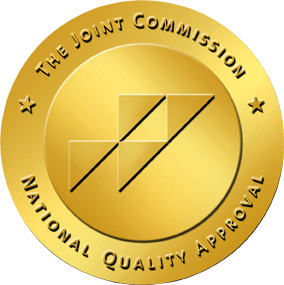Post Traumatic Stress Disorder (PTSD)
Understanding PTSD
Post Traumatic Stress Disorder (PTSD) is a mental health condition triggered by experiencing or witnessing a terrifying event. Symptoms may include flashbacks, nightmares, severe anxiety, and uncontrollable thoughts about the event.
Symptoms of PTSD
PTSD symptoms can vary in intensity over time and can be grouped into four types:
Intrusive Memories: Recurrent, unwanted distressing memories of the traumatic event; reliving the event as if it were happening again (flashbacks); upsetting dreams or nightmares about the traumatic event; severe emotional distress or physical reactions to something that reminds you of the traumatic event.
Avoidance: Trying to avoid thinking or talking about the traumatic event; avoiding places, activities, or people that remind you of the traumatic event.
Negative Changes in Thinking and Mood: Negative thoughts about yourself, other people, or the world; hopelessness about the future; memory problems, including not remembering important aspects of the traumatic event; difficulty maintaining close relationships; feeling detached from family and friends; lack of interest in activities you once enjoyed; difficulty experiencing positive emotions; feeling emotionally numb.
Changes in Physical and Emotional Reactions: Being easily startled or frightened; always being on guard for danger; self-destructive behavior, such as drinking too much or driving too fast; trouble sleeping; trouble concentrating; irritability, angry outbursts, or aggressive behavior; overwhelming guilt or shame.
PTSD Diagnosis
Diagnosing Post Traumatic Stress Disorder (PTSD) is a multi-step process that involves a comprehensive evaluation by a mental health professional. The criteria for diagnosis include:
Exposure to a Traumatic Event: This includes directly experiencing or witnessing a traumatic event, learning that a traumatic event occurred to a close family member or close friend, or experiencing repeated or extreme exposure to aversive details of the traumatic event(s).
Presence of Intrusion Symptoms: These symptoms may manifest as distressing memories, dreams, or flashbacks of the traumatic event, and intense psychological or physiological reactions to cues resembling aspects of the traumatic event.
Persistent Avoidance: The individual may exhibit persistent efforts to avoid thoughts, feelings, conversations, activities, places, or people reminiscent of the traumatic event.
Negative Alterations in Cognitions and Mood: This can include persistent and distorted blame of self or others, persistent negative emotional state, markedly diminished interest in significant activities, feelings of detachment or estrangement, and persistent inability to experience positive emotions.
Marked Alterations in Arousal and Reactivity: These are indicated by symptoms such as irritable or aggressive behavior, reckless or self-destructive behavior, hypervigilance, exaggerated startle response, concentration problems, or sleep disturbances.
Duration of Symptoms: The symptoms must last for more than one month and cause significant distress or impairment in social, occupational, or other important areas of functioning.
Exclusion of Substance Use and Other Medical Conditions: The disturbance is not attributable to the physiological effects of a substance (e.g., medication, alcohol) or another medical condition.
Differential Diagnosis: A mental health professional will also consider other mental health disorders that may present similar symptoms, such as acute stress disorder, adjustment disorders, anxiety disorders, depressive disorders, and personality disorders.
The process of diagnosing PTSD is sensitive and requires a trained mental health professional who can perform a comprehensive assessment, including a detailed interview and, where appropriate, use of validated PTSD assessment tools. This ensures an accurate diagnosis and the formulation of an effective treatment plan.
PTSD Treatment
PTSD treatment aims to reduce symptoms, improve function, and help manage the impact the condition has on daily life. Treatment often includes psychotherapy (talk therapy), medications, or both.
Psychotherapy: Several types of therapy may be effective, including cognitive therapy, exposure therapy, and eye movement desensitization and reprocessing (EMDR).
Medications: Antidepressants can help control PTSD symptoms such as sadness, worry, anger, and feeling numb inside. Other medications may be prescribed to address specific symptoms like sleep problems and anxiety.
Coping & Support for PTSD
Living with PTSD can be challenging, but there are strategies that can help:
Self-Care: Engaging in physical activity, eating a balanced diet, getting enough sleep, and avoiding alcohol and drugs.
Connecting with Others: Spending time with supportive family and friends, joining a support group for PTSD, or connecting with fellow survivors of trauma.
Mindfulness and Relaxation Techniques: Practices such as meditation, yoga, or deep breathing exercises can reduce stress and improve overall well-being.
Professional Help: Seeking regular professional mental health support, including therapy and medication management.
You Can Do This
PTSD is a serious mental health condition that can disrupt your whole life: your job, your relationships, your health, and your enjoyment of everyday activities. However, with effective treatment, self-care strategies, and support, many people with PTSD can manage their symptoms, connect with others, and restore their quality of life.
